Seat Belt
Fastening the Seat Belt
1. Grasp the seat belt tongue.
2. Slowly pull out the lap/shoulder belt.
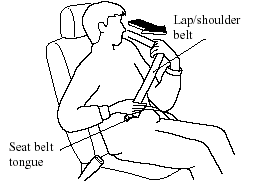
3. Insert the seat belt tongue into the seat belt buckle until you hear a click sound.
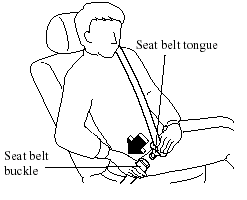
WARNING.
Positioning the Shoulder Portion of the
Seat Belt:
Improper positioning of the shoulder
portion of the seat belt is dangerous.
Always make sure the shoulder portion of the seat belt is positioned across your shoulder and near your neck, but never under your arm, on your neck, or on your upper arm.
4. Position the lap belt as low as possible, not on the abdominal area, then adjust the shoulder belt so that it fits snugly against your body.
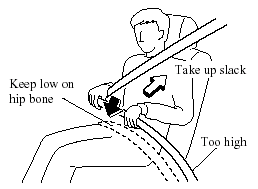
WARNING.
Positioning the Lap Portion of the Seat
Belt:
The lap portion of the seat belt worn
too high is dangerous. In a collision,
this would concentrate the impact
force directly on the abdominal area,
causing serious injury. Wear the lap
portion of the belt snugly and as low
as possible.
Unfastening the Seat Belt
Depress the button on the seat belt buckle.
If the belt does not fully retract, pull it out and check for kinks or twists. Then make sure it remains untwisted as it retracts.
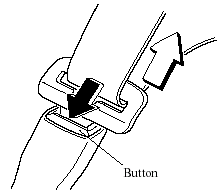
NOTE.
If a belt does not fully retract, inspect it for kinks and twists. If it is still not retracting properly, have it inspected at an Authorized Mazda Dealer.
To secure the outboard-rear row seat belts when not in use, insert the belts into their seat belt retainers.
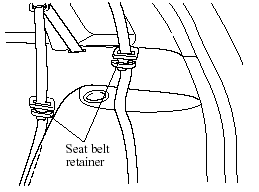
Front Shoulder Belt Adjuster
Adjust the height of the shoulder belt if the seat belt touches your neck, or if it crosses your arm instead of your shoulder.
To raise the shoulder belt adjuster, push the adjuster up. To lower the shoulder belt adjuster, pull the knob and slide it down.
Make sure the adjuster is locked.
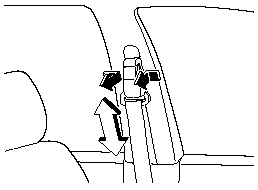
WARNING.
Positioning the Shoulder Portion of the
Seat Belt:
Improper positioning of the shoulder
portion of the seat belt is dangerous.
Always make sure the shoulder portion of the seat belt is positioned across your shoulder and near your neck, but never under your arm, on your neck, or on your upper arm.
See also:
When Warning Indicator/Beep is Activated
Under the following conditions, warning beeps are heard and a
warning/indicator light in
the instrument cluster illuminates to notify the driver of improper operation of
the
advanced key to pr ...
Customer Assistance (Mexico)
Your complete and permanent satisfaction is our business. We are here to
serve you. All
Authorized Mazda Dealers have the knowledge and the tools to keep your Mazda
vehicle
in top condition.
If ...
Floor Mat
WARNING:
Make sure the floor mats are hooked
on the retention pins to prevent them
from bunching up under the foot
pedals:
Using a floor mat that is not secured
is dangerous as it will interfere ...


